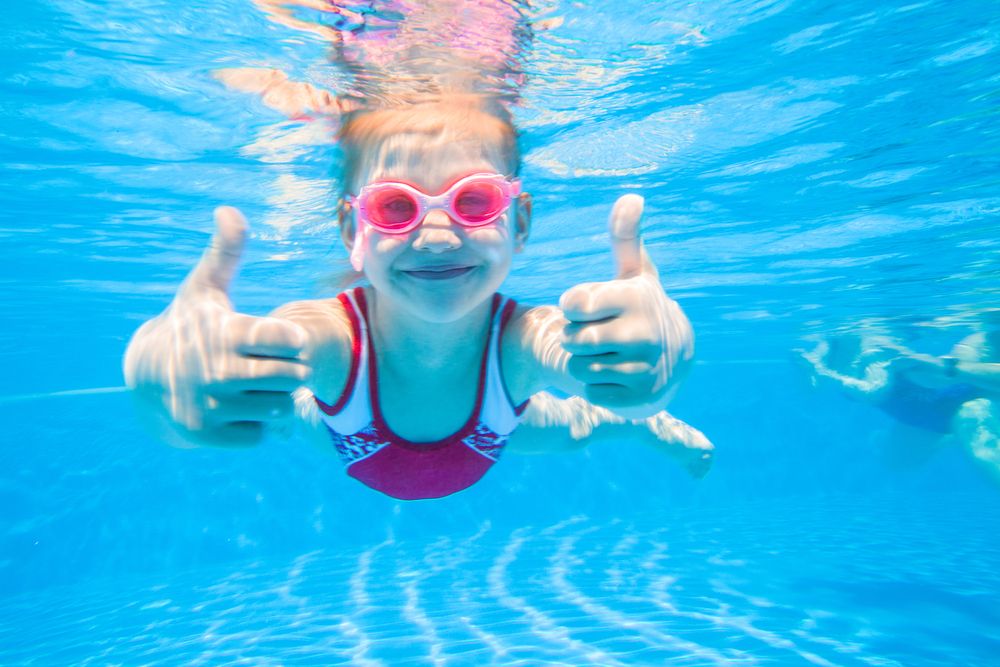AIM Group in East Hills, NY is here to offer these tips regarding water safety for kids so that the whole family can have fun and stay safe this summer.
The Positive Influence of Swimming on Children’s Well-Being
- Holistic Physical Activity: Swimming stands out as an exceptional form of exercise that involves the entire body, supporting the development of various muscle groups including the arms, legs, core, and back.
- Improved Cardiovascular Health: As an excellent cardiovascular workout, swimming increases heart rate, enhances circulation, and boosts lung capacity. Regular swimming sessions help cultivate a strong and healthy cardiovascular system in children, promoting endurance and stamina.
- Advancement Of Motor Skills: Proficiency in swimming requires coordinated movements and skilled body control in the water. Through practicing different swimming strokes, children refine their motor skills, balance, and coordination.
- Enhanced Flexibility And Range Of Motion: The buoyancy of water reduces joint impact, allowing for greater freedom of movement. Swimming acts as a catalyst for improving flexibility and range of motion as children move their limbs through the water.
- Healthy Posture And Body Alignment: Swimming encourages good posture and body alignment. The water’s resistance prompts children to maintain proper bodily alignment for efficient movement in the water. Consistent swimming helps improve posture, strengthen core muscles, and reduce postural issues.
- Increased Confidence and Self-Esteem: Proficiency in swimming and the mastery of aquatic skills can significantly boost a child’s confidence and self-esteem. Overcoming challenges in the water, setting goals, and achieving milestones instill a sense of accomplishment, leading to greater confidence both in and out of the water.
It is essential to emphasize that children should always be supervised while swimming, regardless of their skill level. Qualified instructors should conduct swimming lessons in a safe and controlled environment.
How To Keep Your Kids Safe Around Water
Children’s innate curiosity and fascination with water demand heightened vigilance to ensure their safety. Whether outdoors or at home, it is paramount to establish effective water safety protocols.
1. Prepare for Emergencies: Anticipating unexpected situations is paramount. Equip your child with knowledge on dialing 911 during emergencies and ensure that all adults and older children nearby are proficient in CPR. Preparedness can be the difference-maker in critical moments.
2. Maintain Close Supervision: Keep your child within arm’s reach when they are in or near water. Even momentary distractions can lead to accidents, particularly in bathtubs. Maintain consistent tactile contact with your child and stay cognizant of their whereabouts. If you need to step away from the water, take your child with you to ensure their safety.
3. Designate a Dedicated Water Watcher: Select a responsible adult as the “water watcher,” solely entrusted with overseeing children in or around water. The water watcher should avoid diversions like cell phones or other activities. Regularly alternate responsibilities with another attentive adult to ensure uninterrupted supervision.
4. Educate Your Child on Water Safety Guidelines: Impart vital water safety rules to your child from an early age. Stress the significance of swimming with an adult water watcher at all times and discourage jumping into unfamiliar water or pushing others in. When visiting locations with posted water regulations, read and explain these rules to your child or encourage them to read them aloud to you.
5. Secure Access to Water: Enclose pools with fences and utilize locks on doors leading to pools, hot tubs, and bathrooms to restrict unsupervised entry. Consider installing pool alarms that notify you if a child enters the water without your knowledge. Additionally, be attentive to containers holding water around your home and promptly empty them. Although often overlooked, this step is essential when you have very young children.
6. Enroll Your Child in Swim Lessons: Initiate swim lessons once your child is prepared, enhancing their water safety. Seek credible programs like those offered by the Red Cross and local institutions such as the YMCA. Parent-child water play classes are available for children as young as six months, providing a comfortable introduction to the aquatic environment. Consult your pediatrician to determine the optimal time for your child to begin swim lessons.
7. Utilize Properly Fitted Life Jackets: During water activities, ensure your child wears an appropriately fitted life jacket approved by the U.S. Coast Guard. Avoid relying on air-filled toys or foam devices as substitutes for life jackets. Even with a life jacket, remain vigilant about your child’s whereabouts in the water.
8. Lead through Example: Children learn by observing and emulating adults, particularly their parents. Demonstrate safe behavior by adhering to water safety protocols yourself. Illustrate that adhering to safety measures is integral to enjoying water responsibly.
Remember, constant supervision, swimming proficiency, clear safety guidelines, correct use of flotation devices, and awareness of hazards are pivotal to creating a secure and enjoyable water experience for children. Let’s prioritize water safety, ensuring that every water-related adventure is accompanied by both peace of mind and cherished memories.”

